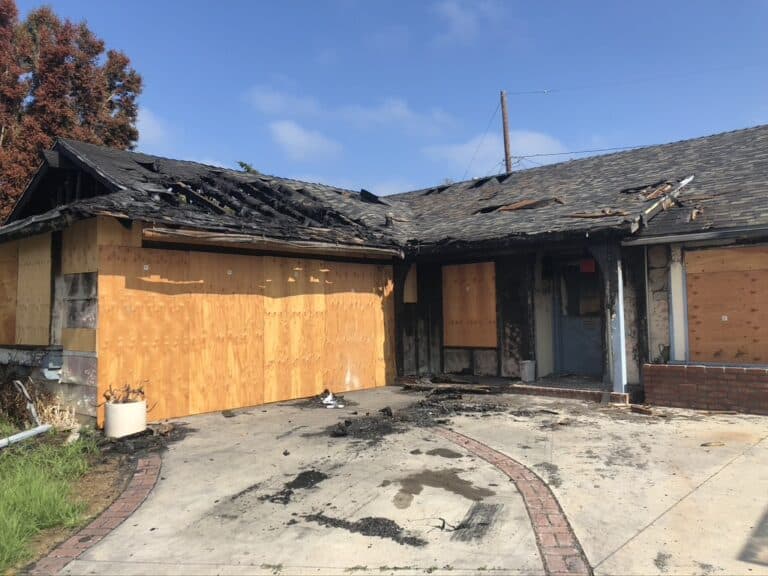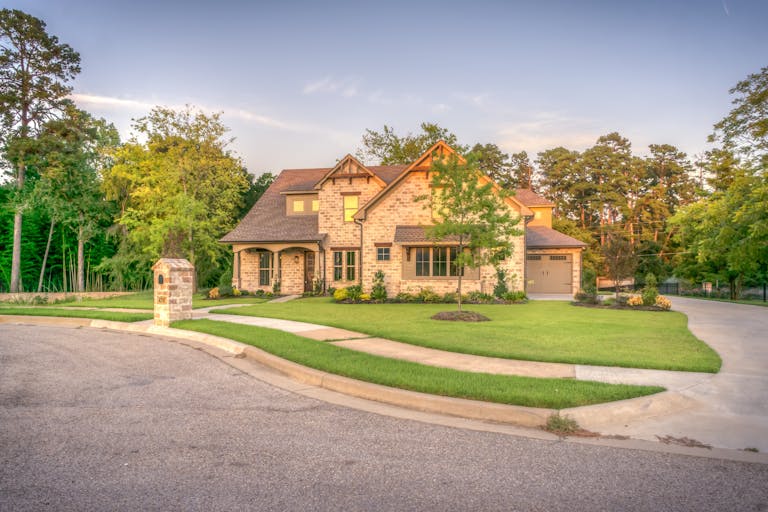Replacement Cost VS Actual Cash Value
Replacement Cost versus Actual Cash Value: Which Coverage Is Best for You?
Deciding between actual cash value vs replacement cost for your homeowners insurance? This article breaks down the key differences, helping you understand which coverage best suits your needs. Learn how each option handles claims and payouts, and make an informed decision to protect your property.
Key Takeaways
● Actual Cash Value (ACV) coverage pays based on the depreciated value of items, leading to lower payouts, while Replacement Cost Coverage provides full value without depreciation.
● Replacement Cost Coverage types—standard, extended, and guaranteed—offer varying levels of protection, with guaranteed offering the most comprehensive coverage against rising rebuilding costs.
● Choosing between ACV and Replacement Cost Coverage depends on your budget and risk tolerance; consider potential out-of-pocket costs versus premium savings when making a decision.
Understanding Actual Cash Value (ACV)
The concept of Actual Cash Value (ACV) is a frequent topic in insurance, notably when discussing the difference between actual cash value and replacement cost coverage. ACV reflects your property’s current value by accounting for its age and wear condition. To calculate ACV, insurers deduct the depreciation from the item’s replacement cost at loss occurrence time. Take a damaged ten-year-old television as an example: Its assessed value will be based on present-day market prices rather than the original purchase price.
Claims payment is calculated using ACV, where claims adjusters utilize depreciation software to determine the ACV, which affects the total claims payment issued to policyholders, reflecting the property’s value at the time of loss or damage.
Depreciation plays a crucial role in figuring out ACV. The diminished value due to factors such as deterioration, lifespan passage, and technological obsolescence are all considered during this assessment process. Insurance companies normally use an item’s projected useful life to identify how much usable life it has left. Consequently, leading items that are older or more used up possess lower ACVs compared with those that have been maintained better or are newer.
When dealing with personal possessions like electronics under ACV coverage, one major concern emerges: payouts frequently fall short of their full replacement costs because they
reflect the depreciated amount instead of what it would actually take to replace them today—for example, you may only get $300 now for replacing your five-year-old laptop initially bought for $1,000 due solely to depreciation effects.
Grasping Actual Cash Value policies proves essential since they tend toward smaller compensation amounts relative Replacement Cost Coverage plans do—leaving many homeowners insufficiently covered when aiming at renewing lost goods after damage incidents occur. Saving some funds through reduced premium fees might seem attractive, but using these plans could compel paying substantial money directly from pocket upon being faced with needing replacements following destructive events occurring.
Exploring Replacement Cost Coverage
Replacement cost coverage ensures a more robust safeguard. This type of insurance covers the entire cost of replacing lost or damaged property with new items that are comparable in kind and quality, not considering any loss in value due to depreciation. With this coverage, you can
get a brand-new TV to replace one that is ten years old without concern for its reduced worth or replacement expense—offering comfort.
Replacement cost value (RCV) is the cost to replace property without accounting for depreciation, ensuring that policyholders receive adequate payouts to restore their property to its original state.
This form of insurance allows homeowners to substitute their damaged possessions without needing to pay additional costs beyond the policy deductible. As such, you’re able to restore your residence back to its pre-damage condition without utilizing personal funds. In contrast,
actual cash value (ACV) coverage could result in financial strain as it may only cover the depreciated amount instead of what it would actually cost for replacements.
There exists an assortment of Replacement Cost Coverage options including standard types alongside enhanced versions like extended and guaranteed replacement cost coverages which provide Safeguards by compensating above policy limits if necessary rebuilding expenses exceed these amounts.
Ensuring your home’s insurance reflects up-to-date reconstruction prices is essential. Thus, updating and reviewing your plan routinely against current market rates and building expenditures is key. Most policies offer calculators designed specifically for estimating correct levels of replacement cost protection so that when circumstances necessitate filing a claim, one has confidence they possess adequate coverage tailored accurately against today’s values.
Key Differences Between ACV and Replacement Cost
The key distinction between Actual Cash Value (ACV) and Replacement Cost Coverage lies in the approach to depreciation. While Replacement Cost Coverage will cover the entire expense of acquiring a new equivalent for an item damaged, ACV takes into account how much an item has depreciated, which can notably decrease the payout amount. For example, under a
Replacement Cost policy, you’d receive enough funds to install a brand-new roof after damage. With ACV coverage, compensation would be based on your old roof’s current value considering its age and wear. Under ACV, policyholders may only receive a portion of what they originally paid for their stolen possessions.
This difference is crucial when filing a claim. The amount compensated by ACV adjusts according to the condition of your property at loss time and may leave homeowners without sufficient funds for repairs. On contrast, opting for Replacement Cost Coverage results in more substantial claims payments that permit restoring your home fully without personal financial burdens.
When evaluating what level of coverage suits best for you, consider regional rebuild prices carefully since they can influence costs significantly. Despite typically offering higher payouts
compared to other policies thus providing broader protection, it’s important to note that premiums associated with replacement cost policies might also reflect this increased risk through their elevated rates.
Real-World Examples: ACV vs. Replacement Cost
Consider some real-world examples to illustrate the impact of ACV and Replacement Cost Coverage. The Johnson family experienced $15,000 worth of roof damage. Under their ACV policy, they received only $4,000 after accounting for $10,000 in depreciation and a $1,000 deductible. This left them with a significant shortfall to cover the actual repair costs.
Under a Guaranteed Replacement Cost scenario, an insurance company would pay $375,000 to rebuild a property damaged beyond repair. This coverage ensures homeowners are fully compensated for rebuilding costs, eliminating out-of-pocket expenses except for the deductible.
These examples highlight how the type of coverage can drastically affect financial outcomes. Types of Replacement Cost Coverage
Replacement cost coverage comes in various forms to cater to different needs and scenarios. Common types include standard, extended, and guaranteed replacement cost coverages, each with distinct advantages tailored for specific circumstances.
Typically, Standard Replacement Cost Coverage covers the costs associated with repairing or rebuilding property but is capped at the policy’s maximum limit. When these limits are insufficient due to escalating rebuilding expenses, Extended and Guaranteed options become valuable as they offer an additional layer of financial security ensuring comprehensive protection.
Looking closer at Extended and Guaranteed Replacement Cost Coverages can be beneficial given their popularity as enhanced insurance solutions that provide extra safeguards against potential shortfalls in coverage.
Extended Replacement Cost
Extended Replacement Cost Coverage serves as an elective enhancement, granting extra monetary safeguards that surpass the standard policy’s specified limits. It extends coverage by 20% to 25% beyond the declared limit of the policy, thus offering a cushion against unforeseen escalations in reconstruction expenses.
The importance of this additional protection cannot be overstated, particularly in scenarios where construction costs swell unexpectedly because of circumstances such as natural calamities or inflationary pressures. By opting for Extended Replacement Cost Coverage, you are assured sufficient resources to reconstruct your home while minimizing any substantial out-of-pocket costs.
Guaranteed Replacement Cost
Replacement cost coverage guarantees total financial support for reconstruction, even if construction expenses rise in the future. With this coverage, the insurance company commits to covering the entire expense of rebuilding your home beyond any policy limits set, with the sole exception being your deductible.
Such coverage offers reassurance that you will not encounter monetary strain should the costs of rebuilding soar. This is especially advantageous in regions vulnerable to natural disasters where building expenses may increase without warning.
Deciding Between ACV and Replacement Cost Coverage
Deciding between Actual Cash Value (ACV) and Replacement Cost Coverage requires assessing your financial situation, willingness to take risks, and specific requirements. Typically, owners of property opt for Replacement Cost Coverage since it provides compensation based on the actual cost to replace their items, ensuring more extensive protection.
Although ACV coverage often comes with a lower price tag, making it appealing for those who have budget constraints, one should contemplate the potential expenses you may need to cover from your own funds if you file a claim. Opting for a higher deductible might decrease the amount you pay in premiums, but necessitates careful evaluation of whether you can afford that deductible when necessary.
Speaking with an insurance agent is beneficial in customizing your coverage choices according to both individual circumstances and valuable assets. Maintaining an up-to-date list of personal effects and periodically reassessing your policy are vital steps in guaranteeing sufficient protection against losses.
The Role of Deductibles and Policy Limits
It’s essential to grasp the significance of deductibles and policy limits when choosing suitable insurance coverage. The deductible represents the sum you’re obligated to pay out-of-pocket before your insurance kicks in following a loss. Make sure to scrutinize the specifics of your policy so that you comprehend which claims necessitate a deductible.
The maximum payout from your insurance company for an insured loss is set by the policy limit. Should your claim exceed this threshold, any additional costs must be borne by you. To circumvent unforeseen expenses that come out of pocket, it’s important to establish proper deductibles and policy limits carefully.
Enhancing Your Homeowners Coverage
Exploring various add-ons and endorsements that cater to individual requirements is a way to bolster homeowners insurance. Coverage for scheduled personal property extends additional safeguarding for valuable assets such as art, jewelry, and collectibles, surpassing the typical limitations of a standard policy. This enhancement can protect these high-value items from an expanded array of potential risks.
An insurance agent is instrumental in assisting homeowners with customizing their coverage options for ideal protection. Adding endorsements might elevate your insurance plan by covering particular perils like damage from hail or windstorms.
It’s crucial to consistently reassess and modify your insurance policy to ensure it meets changing needs adequately over time.
Protecting Your Investment with the Right Coverage
Choosing the right homeowners insurance is essential to protect a major financial asset. The correct coverage can greatly influence the security of your home investment, preventing unforeseen financial hardships should a loss occur.
Seeking advice from independent insurance agents offers impartial guidance customized to your unique coverage requirements and local hazards. Working with experts guarantees that you have the best policies established to secure your financial interest.
Summary
In summary, it is essential to comprehend the distinction between Actual Cash Value (ACV) and Replacement Cost Coverage when selecting home insurance. Opting for ACV could reduce your premium costs, but choosing Replacement Cost Coverage provides broader protection. To ensure optimal coverage against unforeseen events, one should frequently review and revise
their policy, seek advice from insurance professionals, and contemplate securing extra endorsements.
Frequently Asked Questions
What does actual cash value (ACV) coverage calculate?
Actual cash value (ACV) coverage determines your claim payout by taking the original cost of an item and subtracting any depreciation.
So, it’s essentially what the item is worth now, not when you bought it.
How does replacement cost coverage differ from actual cash value coverage?
Replacement cost coverage lets you replace damaged items with new ones, ignoring depreciation, while actual cash value coverage pays you the current value of the item after factoring in depreciation.
In other words, replacement cost gives you a full replacement, while actual cash value gives you what the item was worth before it was damaged.
What type of coverage do personal belongings like electronics usually have?
Personal items such as electronics are insured for their actual cash value (ACV), which refers to their current value after accounting for depreciation.
Make sure you examine your policy thoroughly for detailed information!
What is extended replacement cost coverage?
Extended replacement cost coverage is a smart way to protect yourself, as it helps cover the full cost of rebuilding your home even if it goes beyond your policy limit.
It’s worth considering for peace of mind.
How does guaranteed replacement cost coverage work?
Guaranteed replacement cost coverage means your insurance will cover the total cost to rebuild your home, no matter how much that ends up being. This ensures you’re fully protected, even if construction costs rise unexpectedly.








One Comment
Comments are closed.